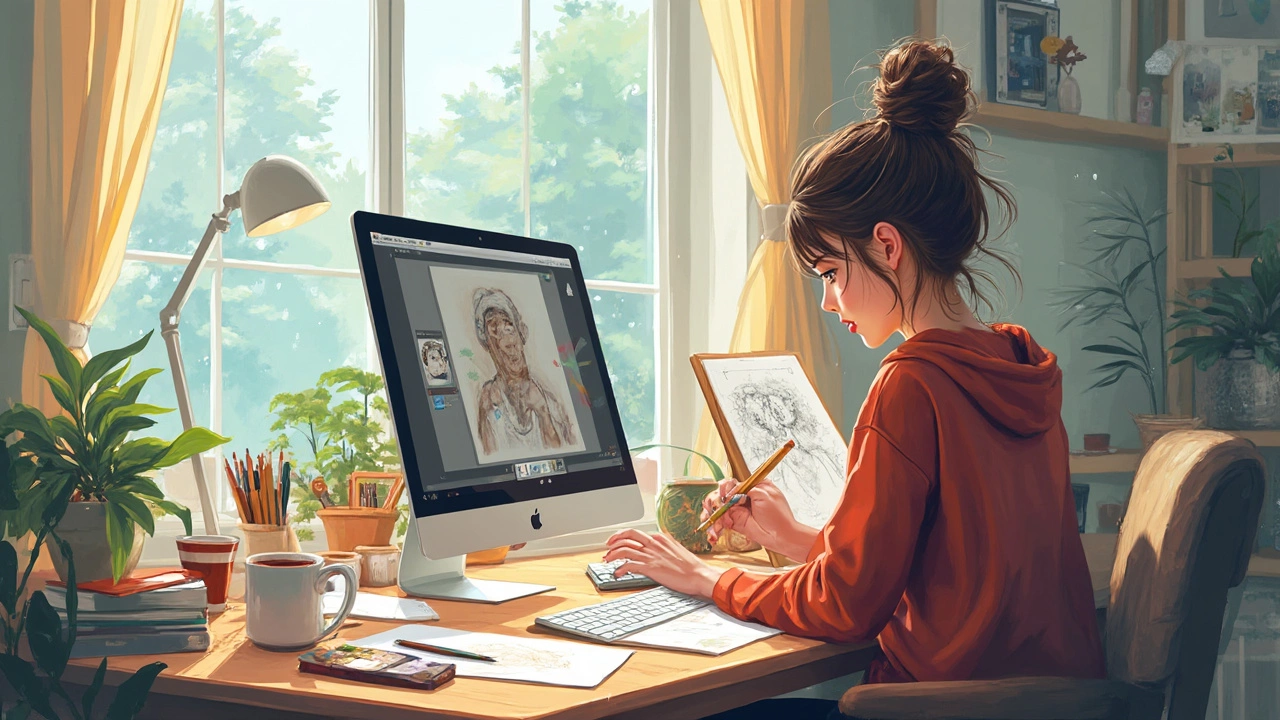Digitize Art: Simple Steps to Turn Your Work into Digital Files
Got a painting, sketch, or sculpture you love and want to show it online? Turning physical art into a digital file is easier than you think. All you need are a few tools, a bit of patience, and the right settings. This guide walks you through the process so you can upload sharp, true‑to‑life images without spending a fortune.
Choosing the Right Capture Method
First, decide how you’ll capture your piece. The two most common ways are scanning and photographing. Scanners work great for flat art like drawings, watercolors, or prints. They give consistent lighting and keep the colors accurate. If you have a scanner, set it to at least 300 dpi for decent detail; go higher (600‑1200 dpi) for fine textures.
For three‑dimensional work—sculpture, installations, or textured paintings—photography is the way to go. Use a digital camera or even a good smartphone. Place the artwork on a neutral background, preferably white or gray, and shoot in natural light or with soft diffused lights. Avoid harsh shadows by positioning the light source at a 45‑degree angle on both sides.
Don’t forget to stabilize your camera. A tripod (or a stack of books) eliminates blur, especially in low light. Set the camera to the highest resolution possible, use a low ISO (100‑200), and turn off any automatic processing that might over‑enhance colors.
Preparing Files for Online Use
Once you have the raw image, it’s time to clean it up. Open the file in a free editor like GIMP or a basic photo app. Crop out any extra space, straighten the image, and adjust exposure if needed. Keep the color profile in sRGB – that’s what most browsers and social platforms use.
Next, choose the right file format. JPEG is perfect for quick uploads and social media because it balances quality and file size. Save a high‑quality JPEG (80‑90% quality) for web use. If you want lossless files for printing or archiving, go with PNG or TIFF. Keep the original, untouched file saved in a folder labeled “RAW” so you can revisit it later.
File size matters. Aim for images under 2 MB for fast loading. If your picture is larger, use an online compressor or the “Save for Web” option in your editor. That way visitor pages stay snappy and you avoid storage limits on free platforms.
Finally, think about where you’ll host your digital art. Free services like Instagram or Behance are great for exposure, but they compress images further. For a professional portfolio, consider a dedicated site or a cloud drive with a shareable link. Tag each file with descriptive names—e.g., "sunset‑oil‑2024.jpg"—so search engines can pick them up.
Digitizing art doesn’t have to be a tech nightmare. Pick a capture method that fits your medium, clean up the image with basic tools, and save it in web‑friendly formats. With these steps, you’ll protect your originals, showcase your work worldwide, and open doors to new opportunities.
